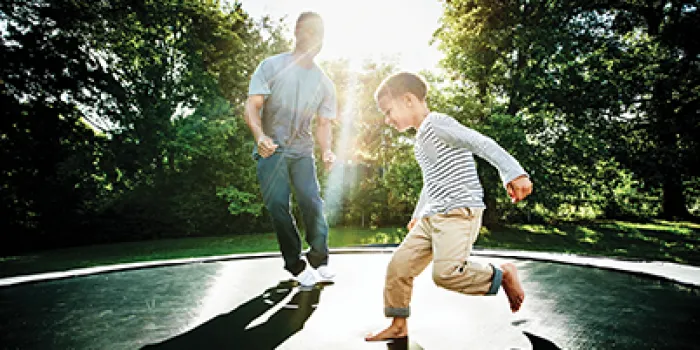Americans get so many messages about the role of exercise in our health. We’re told that it can strengthen our hearts, slim our waistlines and protect our joints. And while those messages are true, they can leave people feeling that exercise is an obligation, a chore, a job—and that can discourage them from sticking with it and reaping its benefits.
But you can take the “work” out of your workout by redefining what exercise means to you. To start, think back to childhood.
“Most children have a relationship with movement that begins with joy,” says Leslie Bloch, LCSW-R, a psychotherapist in New York and co-founder of the Full Bloom Project, which promotes body-positive parenting. “Young kids move by playing, by exploring.”
As we grow up, though, that often changes. Sports in school frequently become less about connecting with friends and simply playing and more about competition, Bloch says. “Kids tend to drop out when it’s not fun anymore,” she says.
That lesson, learned early, stays with us as adults. We dutifully track the steps we take, the calories we burn, the minutes we spend on the stair climber. There’s little fun or joy in that. Bloch’s antidote: Take exercise as you now understand it off the table and focus on movement.
“Reconnect with the fact that movement is acceptable in all different body types and in all different ways,” Bloch says. “Then go and explore in order to find what types of movement you like. As you try different things, ask yourself if it’s something that you find fun.” It could be as simple as a walk in the park, dancing, golfing or paddling a kayak. In a nutshell, if the stair climber is the bane of your existence, give yourself permission not to do it.
Tailor your movements to what you can safely do, of course. As with any new exercise, first check with your healthcare team to make sure it’s right for you and whether it requires special preparations or modifications. For example, if hiking’s your thing, you will probably need proper footwear and possibly a precautionary adjustment to the timing of your factor treatment in case of a fall. Once you find appropriate activities that inspire you to get moving, you should find it easier to make healthy movement a regular part of your routine. Such consistency is key to your overall health.
Bloch encourages people to include friends to add a social element and increase the fun factor. If you want to dance and don’t have a partner, sign up for a class. She also recommends getting outdoors as much as possible to help reconnect with the sense of freedom and play that kids naturally have when they romp outside. Find a field where you can run around, especially if you have young children, she says, or meander the trails or paths of a nearby park.
If you don’t know where to start, brainstorm. Make a list of different types of movement: bike riding, gardening, splashing around in a pool, chasing your children in a game of tag, playing table tennis, going on a scavenger hunt. Put a check mark next to each one you want to try.
“Most people will know what appeals to them, but if it’s something they enjoy doing, they often don’t feel that it counts” as exercise, Bloch says. “If it’s movement, it does count, so give yourself permission to do it and go from there. Enjoy the process of moving your body.”

